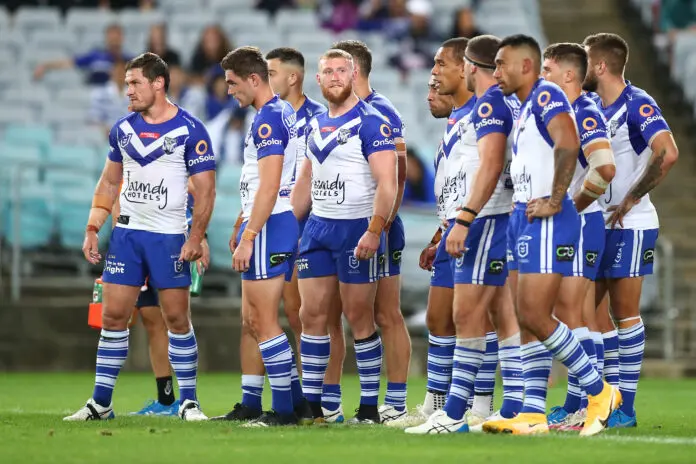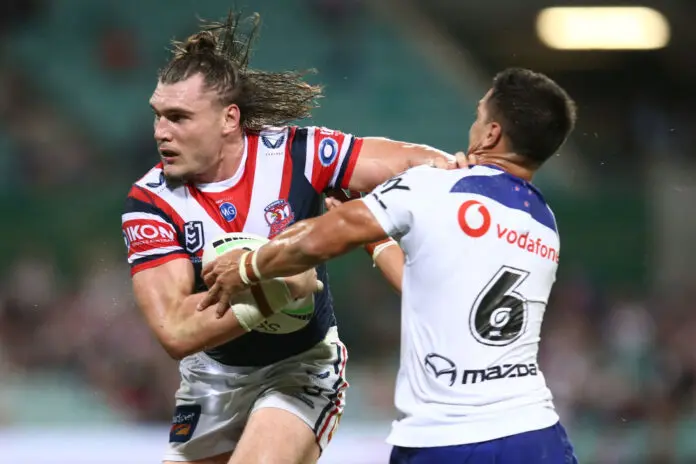The NRL doubled down on its 'six again' 2020 rule change this season, determined to create a more open, brisk and attacking product for fans.
Along with a suite of other changes, the intention of the immediate re-start of tackle counts rather than the awarding of penalties, is seen by many to have enhanced the visual spectacle on display.
However, after eight weeks of play, data suggests that the new initiatives have done little more that add a penalty goal to the number of points actually being scored, as well as forced a number of teams to begin planning for the future, knowing they are without a hope in Hades in 2021.

In effect, the total number of points being tallied in matches has been minimally impacted and a significant percentage of the competition has already been sent packing for the season. Writing those teams off has been simple and made even more so by the vast margins of victory that have littered the early rounds.
A total of 14 of the 64 matches played to date in the 2021 season have been drubbings, with margins of or in excess of 28 points. Alarmingly, just 24 matches have ended with winning margins of ten points or less, leaving 26 other games where the margin of victory has fallen between 11 and 27 and a relatively comfortable result for the victors.
Whilst some may be fooled into thinking that those wider margins and the seemingly greater discrepancy between the winners and losers may be the result of increased attacking output and in turn, be a positive for the game, they might best think again.

A simple rugby league observer could well cite the increased speed of play, decreased number of scrums and less time wasted as positives and a direct cause of what they may wrongly perceive as an enhanced attacking product, where far more points are being scored on a weekly basis.
In fact, the wide-margined hammerings have contained essentially the same amount of points as seasons past and done little more than write off a host of teams earlier in the season than would normally have been the case.
The data proves quite clearly that the NRL's new rules and its 'six again' initiative has added a penalty goal to each game, yet made the chasm between good and bad so wide that eleven teams seem certain not to compete for the premiership.
At least six; Canterbury, Brisbane, Wests Tigers, Cronulla, North Queensland and Newcastle, can probably kiss goodbye any hope they had of playing in the finals.

In 2017, NRL matches featured an average of 40.2 points per game. The following season, that figure rose to 40.6 and in 2019 fell slightly to 39.3. That ball park average of around 40 was deemed unacceptable by the powers at be and sweeping changes were made to address what many touted as serious issues within the game.
A concerted effort was made to increase the speed of play and the attacking opportunities on offer, via the new suite of rules; all to little or no effect when it comes to the actual number of points being scored in an average match.
The COVID-19 impacted year of 2020 saw the kernels of the current rules introduced and a miniscule increase to an average of 42 points per game. As we currently stand in 2021, last year's figures have risen to an average of 42.6 points per game, with a third of the season already completed.
In essence, the NRL has sent referees onto the field, armed with powers that keep teams rolling down the field off the back of multiple tackle restarts. At times, there has been three or four in succession and the momentum has proved impossible to stop.
Logically, massacres occur and many of the more shallow squads and those in a rebuilding phase have seen and will see their fans walk as a result of a refusal to spend their hard earned on a contest that appears a forgone conclusion.
If that is what the NRL wanted, I hope they reflect deeply over the crowd figures come season's end. Perhaps they might also like to chat with broadcasters and discuss their challenge of pumping up any game not involving the five teams capable of winning the premiership in Penrith, Parramatta, Souths, Sydney Roosters and Melbourne.

After eight weeks, the new rules have done little more than add a couple of points to game totals, alienate fans of those clubs already disheartened and widen the gap between those that can and those that cannot.
End of season ratings, crowd figures and future club membership numbers may suggest that in the search for enhanced entertainment, the NRL failed to entertain the majority.







So what you’re suggesting is that the actual games should be ‘dumbed down’ & slowed down, to make it look like more teams are competitive for longer?
When in fact, most have zero chance of actually winning the competition.
I’d suggest that the teams that aren’t really that competitive , should take a look at their clubs & find out why?
Maybe they should each look to put in place better junior systems & look to attract more youngsters in their own areas to play the game. Look to also work alongside different country areas , to help country league survive & bring some of the players in these areas through pathways programs. At their clubs.
Rather than just looking to buy their first grade teams from Penrith, Newcastle, NZ , Queensland, Parramatta .
Then through a whole lot of hard work by their actual clubs, bring their teams standards up to meet the teams that are at the top of the competition.
Of course, we all know that Melbourne, Roosters etc just buy most of their talent in. Either at a first grade or even junior levels. That’s a whole different story.